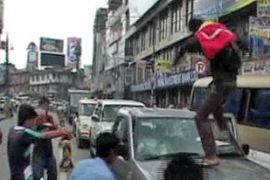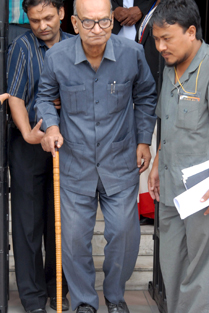Nepal prepares to elect president
The country has been unable to form a coalition government since elections in April.

He is backed by the Communist Party of Nepal (Maoist), known as the Maoists, which now has the majority of seats in the 601-seat Constituent Assembly but not enough to form a government without a coalition.
Singh is also backed by three smaller parties representing the Madheshi, a minority ethnic group in southern Nepal. Madheshi have been campaigning for autonomy and greater rights.
Death penalty
In 1985, Singh faced the death penalty for throwing small bombs at parliament and at the palace as part of an anti-royal protest.
 |
| Ramraja Singh arrives for the presidential vote [EPA] |
Singh was pardoned in 1990 and returned from exile in India. He has not been an active politican since.
King Gyanendra came to the throne after seven members of his family were shot dead by Crown Prince Dipendra in 2001. He was told to leave the palace in May, and the 240-year-old monarchy was abolished.
The president is likely to take over some of the ceremonial duties previously performed by the king.
Yubaraj Ghimire, editor of Samay, said: “If the Maoists are able to secure the support of at least 72 more people, they are going to have their representative elected.”
“The president will accept the resignation of the [interim] prime minister and then the Maoists can form a government.”
No matter who wins, the head of state will be “President Ram,” since all three candidates share the name of the incarnation of the Hindu god Vishnu.
Deadlock
The inability of the three main parties to reach a quick compromise, however, does not bode well for the two-year-old peace process, in which the former Maoist fighters put down their arms after a decade of conflict.
The assembly must still draft a new constitution, decide whether and how to merge the Maoist fighters with the national army, and oversee a human rights reconciliation process.
New laws can only be passed by a two-thirds vote, and the two big centrist partners in the peace deal are now lining themselves up as opposition forces.
Kundan Aryal, editor of the Nepali news magazine Himal, said: “The Maoists are taking a big risk by sidelining the two other major parties at the ultimate hour.
“With the three parties going three separate ways, the road to the smooth functioning of the new government looks rocky.”
The Nepali Congress and the Communist Party of Nepal (United Marxist-Leninist), the second and third largest parties, have their own candidates for president but do not have enough votes.